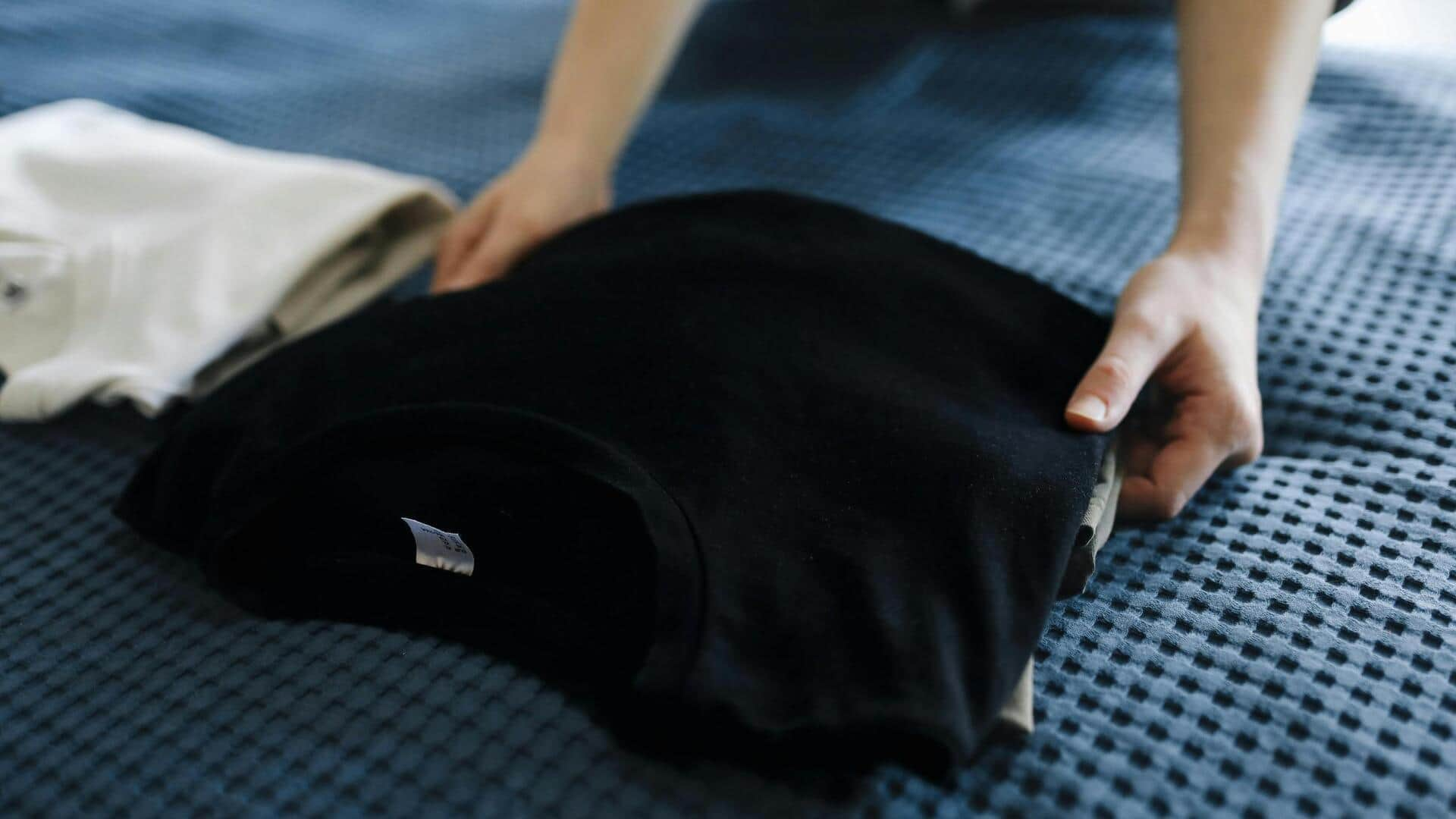
Fold t-shirts like a pro in seconds
What's the story
Folding t-shirts may seem like a mundane task, but it can save you a lot of space and keep your wardrobe organized. With the right techniques, you can fold t-shirts quickly and efficiently, making them easy to store and access. Here are some practical tips and tricks to help you master the art of folding t-shirts like a pro.
Classic fold
The classic fold technique
The classic fold is a tried-and-true method that works for most T-shirts. Start by laying the shirt face down on a flat surface. Fold one side towards the center, then fold the other side over it so that both sleeves are aligned with the shirt's sides. Finally, fold from the bottom up to complete the process.
Quick fold
The quick fold method
For those who are always on the go, the quick fold method is a lifesaver. Place your t-shirt flat with its front facing up. Pinch the shirt at two points: one near the shoulder seam and the other at the bottom hemline. Bring these two points together while folding inwards simultaneously, creating a neat rectangle shape in seconds.
Rolling technique
Rolling technique for travel
Rolling is ideal for travel as it saves space in your luggage. Start by laying your T-shirt flat with its front facing up. Fold in both sleeves towards the centerline to create a long rectangle shape. Roll tightly from the bottom hem up to the neckline, ensuring no creases form along the way.
Folding boards
Using folding boards for consistency
Folding boards are a great tool for keeping uniformity in your T-shirt folds. Place your shirt on the board with its front facing down, then fold each side over the board edges before folding the top down over the bottom hemline. This gives you perfectly sized folds every time without any guesswork involved.
Maintenance tips
Tips for maintaining folded shirts
To keep your folded shirts looking crisp, store them in drawers or shelves where they won't get crushed under heavy items like jackets or pants. Avoid hanging them as this may stretch out the fabric over time. Use breathable materials like cotton covers if necessary, to keep dust away while allowing air circulation through fabric fibers.